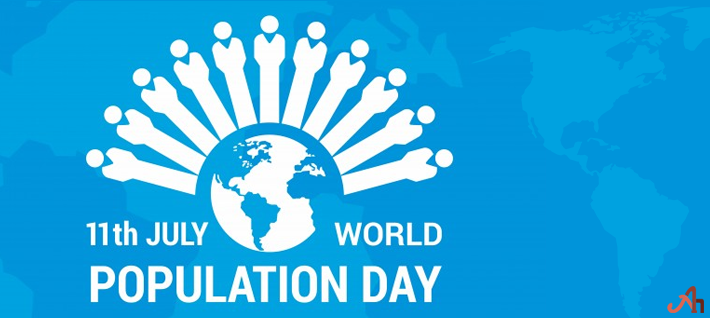What is World Population Day, and why is it being celebrated?
World Population Day is on the 11th of July. As the name suggests, this day concerns issues regarding population and was originated to spread awareness about its rapid escalation. It is celebrated all over the world. World Population Day’s history dates back to July 11, 1989, when the governing council of the UNDP (United Nations Development Program) came up with the idea of influencing and educating many people at a time. The global population touched five billion around 1989 it was then that the concept of World Population Day was conceived. It is commemorated to spread awareness among the people about the population that escalates every year. This day plays a great role in bringing the issue of the growing population into the concern of the people. China and India are the two most populated countries in the world.
Why do we need World Population Day?
There are many issues that the world goes through today, one of which is the growing population. This is an issue that affects so many factors, including the natural resources for the sustenance of all living beings. The growth in population increases the demand for resources.
Let’s look at some of the negative impacts of the growing population:
- Lack of Water Supply: One of the main negative environmental impacts that overpopulation has led to is the deficiency in the supply of adequate and clean water. Many parts of the world go through a crisis of clean water, due to which people are compelled to use contaminated water, which contributes to the escalation of epidemic diseases. Rivers are mostly used for irrigation, as a result of which they dry up before reaching the people.
- Deforestation: Many forests are cleared for industrial, agricultural, and urban use every year. When there is rapid growth in the population, the demand for crops and wood will also increase, resulting in the massive clearing of forests. Then there is the need for space as well, people require an area to accommodate themselves. More people, more houses, buildings, stores, vehicles, etc.
- Unhygienic Surroundings: Overpopulation leads to the possibility of a filthy environment both in rural and urban sections of a country. The rural areas cannot sustain such a huge population; hence, people often migrate to cities in search of jobs. The labor class cannot afford to rent accommodation, so either they begin staying on the roadsides or create slums where they stay in extremely unhygienic conditions that are potent for giving birth to epidemic diseases.
- Unemployment: When there is overpopulation in a country, people will face unemployment as there are limited requirements for candidates for jobs. Now, this issue of unemployment gives rise to so many crimes. To meet the basic requirements of their family, people will indulge in activities like theft, looting, burglary, kidnapping, etc.
- Deficiency in Natural Resources – There is a limitation to the number of resources that the earth can produce. The food and water supplies are falling short due to the rapid growth of the population. Moreover, people are cutting down trees and clearing up fields for the construction of buildings. People who can access sufficient food and water are over-using them; farmers are not given their recognition and acknowledgment, etc.
So, these are some of the harmful impacts of overpopulation on the environment and society.
Why and how is World Population Day celebrated?
- World Population Day is celebrated to provide information about the escalating world population and spread awareness about the negative impacts and consequences of the growing population through many campaigns.
- It aims at educating people about the importance of marrying at the right age when they are responsible enough to plan a family.
- It lets people know about the disadvantages of gender stereotypes.
- There are campaigns in villages and cities that educate them on the importance of population control.
- It aims at convincing people about the equal rights of education for both male and female children.
- There are campaigns in schools as well that educate the children about the importance of conserving resources.
- There are debates, discussions, workshops, conferences, rallies, educational seminars, and many more activities held on World Population Day in different countries.
The purpose and the awareness that Population Day serves are to be followed by all the people of the world. Since the problem of overpopulation gives rise to so many other issues, we can consider it among the most hazardous affairs that the world faces today. We, being the inhabitants of the earth, should take responsibility for maintaining a healthy balance of population, which is not only beneficial to society but to ourselves as well.
When was World
Population Day established?
World Population Day was established on July 11, 1989, by the United Nations
Development Program (UNDP) to draw attention to the consequences of the rapidly growing population.
Why do we need
World Population Day?
World Population Day is needed to highlight and address the various issues caused
by overpopulation, such as the depletion of natural resources, unemployment, deforestation, water shortages,
and unhygienic living conditions.
What is the goal
of World Population Day campaigns?
The goal of World Population Day campaigns is to educate people about the
importance of population control, the negative impacts of overpopulation, and the significance of
responsible family planning and equal rights to education.
How does
overpopulation affect natural resources?
Overpopulation increases the demand for natural resources, leading to shortages of
food and water, deforestation, and overuse of land and resources.
Why is it
important to control population growth?
Controlling population growth is important to ensure the sustainable use of natural
resources, reduce environmental degradation, improve living conditions, and prevent socio-economic issues
such as unemployment and poverty.
Posted on July 11, 2017 by NAH
Previous Post Next Post



